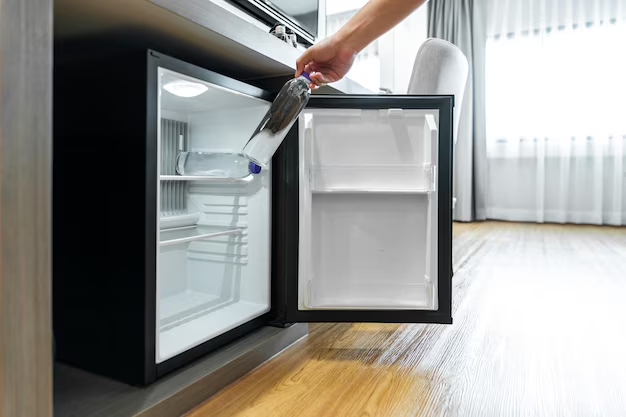How to Safely Move Your Refrigerator: Can You Tilt It?
Moving a refrigerator can be a daunting task. This significant appliance is not only bulky but also contains sensitive components that can be easily damaged if not handled properly. Can you tilt a refrigerator without causing harm? This question often arises during moves, whether relocating to a new home or simply rearranging your kitchen. This article will delve into best practices for moving a refrigerator, exploring if and how you can tilt it safely while protecting its integrity.
🌟 Why Avoid Tilting Your Refrigerator
The Mechanics of a Refrigerator
Understanding why it's crucial to handle a refrigerator carefully starts with a brief overview of how it works. Refrigerators rely on a sealed system of refrigerant to cool the interior, powered by a compressor, condenser coils, and evaporative coils. Tipping the unit can cause refrigerant to move in unintended ways and disrupt the operation of these components.
Risks of Tilting a Refrigerator
- Compressor Damage: The compressor is filled with oil, which is necessary for lubrication. Tilting can cause this oil to drain out, potentially leading to compressor failure.
- Coolant Misalignment: Tilting may cause the refrigerant to flow incorrectly, resulting in decreased efficiency or requiring expensive repairs.
- Structural Integrity: A refrigerator's weight distribution is designed for upright positioning. Tilting it drastically can stress components not designed to bear weight in such orientations.
🚚 Is It Ever Safe to Tilt a Refrigerator?
Limited Tilting Scenarios
While generally discouraged, slight tilting might be necessary in certain situations, like moving through low doorways or narrow spaces. When tilting is unavoidable:
- Limit the Angle: Keep the tilt to an absolute minimum — ideally no more than 30 degrees.
- Short Duration: The less time spent tilted, the better. Aim to move it back to its upright position as quickly as possible.
Preparations Before Tilting
- Empty the Refrigerator: Remove shelves and store all perishables. The more weight inside, the greater the internal stress.
- Secure Moving Parts: Any components that could shift or amplify risks should be tightly secured.
- Gather Support: Moving a refrigerator typically requires more than one person. Having helpers can prevent unexpected shifts and support controlled movement.
🗺️ Planning Your Move
Mapping Your Route
Before moving your fridge, map the path you plan to take. Measure doorways, staircases, and hallways to ensure the appliance can pass through without the need for tilting.
Tools to Aid the Move
Investing in the right tools can make the process smoother and safer:
- Dolly or Hand Truck: A sturdy appliance dolly can minimize the need to tilt since it allows rolling of the unit.
- Furniture Sliders: Useful for moving across floors without lifting.
- Moving Straps: Can help distribute weight and make it easier to control the appliance while moving.
🛠️ Step-by-Step Guide to Moving Your Refrigerator
Before the Move
- Disconnect Power: Unplug the refrigerator to safely move it without electrical hazards.
- Remove Everything Inside: Detach all shelves and secure loose parts.
- Clean Exterior: Wipe down the outside to ensure that it’s easy to grip and handle.
Executing the Move
- Position the Dolly: Tilt the refrigerator slightly — if needed — to slide the dolly under.
- Secure the Fridge: Use straps to firmly fasten the refrigerator to the dolly.
- Maneuver Carefully: Traverse your planned route, maintaining as upright a position as possible.
After the Move
Allow your refrigerator to stand upright for at least a few hours after it has been moved. This lets any displaced oil in the compressor resettle into its proper place, helping prevent any malfunction when it’s plugged back in.
👀 Common Conditions & Considerations
Moving Across Town or Long Distances
If transporting across greater distances using a vehicle, ensure that the refrigerator remains upright during transit. If tilting occurs, extend the upright resting time before powering it on, giving the refrigerant and oil ample time to settle.
Newer Models vs. Older Models
Modern refrigerators often have more complex technologies and mechanisms that can be more sensitive to tilting. Conversely, older models, while simpler, might lack protective features found in newer units, requiring equal or greater care.
Emergency Situations
In emergencies where immediate movement is necessary, such as flood scenarios or emergency evacuations, prioritize safety and handle the unit the best way you can under the circumstances. If long-term damage occurs, professional servicing may be required later.
💡 Quick Takeaways for Moving a Refrigerator
To ensure you remember the vital steps and insights, here’s a handy summary:
- 🔌 Unplug and empty the refrigerator completely.
- ⬇️ Minimal Tilt: Avoid tilting >30°, and keep it brief.
- 🔧 Use Equipment: Employ a dolly, straps, and sliders.
- 🛠️ Plan: Measure all routes and door frames ahead of time.
- ⏲️ Rest Period: Post-move, let the fridge stand upright for several hours before plugging in.
Moving a refrigerator is a task that demands careful preparation and execution to avoid damage and ensure safety. By respecting these guidelines, not only do you protect your appliance, but you also ensure a smoother relocation process.
Understanding these intricacies empowers you to make informed decisions, whether you opt to tackle the task yourself or decide to employ professional movers. 🛠️
